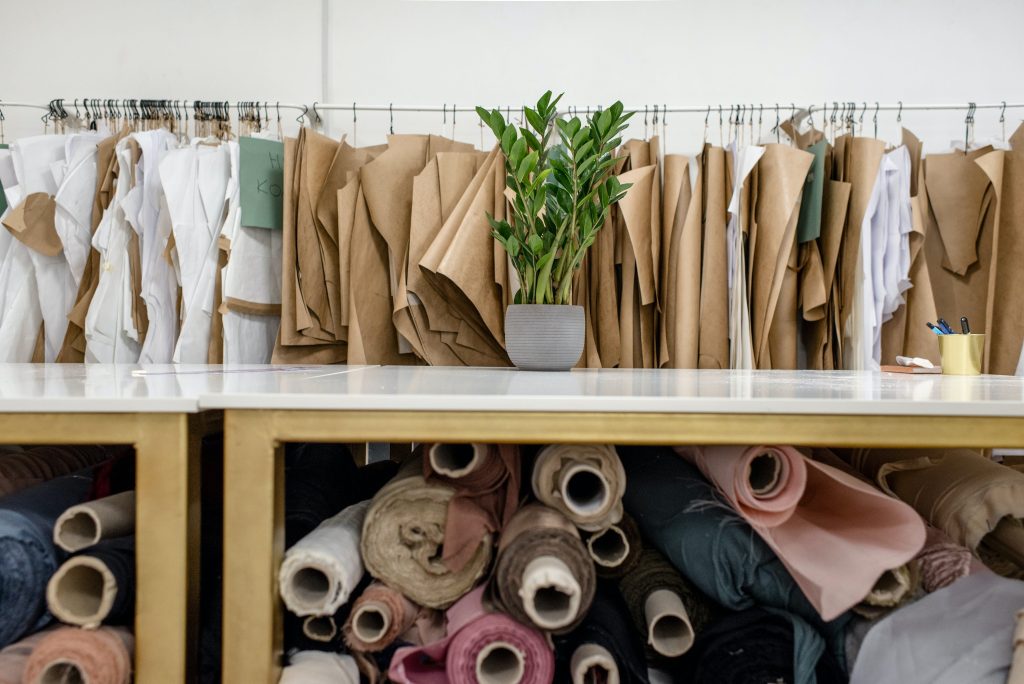In a world where environmental consciousness is becoming increasingly crucial, our choices, even in the realm of fashion, play a vital role in shaping a sustainable future. The fashion industry, often associated with fast-paced trends and a disposable culture, is undergoing a transformation towards sustainability. In this guide, we’ll explore the impact of natural and synthetic fabrics and provide tips on how to make eco-conscious choices while shopping for clothes.

1. Understanding Natural and Synthetic Fabrics:
- Natural Fabrics: Opt for materials like organic cotton, hemp, linen, or bamboo. These fibres are grown without harmful pesticides and synthetic fertilisers, ensuring a more eco-friendly production process. Natural fabrics are often breathable, comfortable, and biodegradable.
- Synthetic Fabrics and Their Origins: Synthetic fabrics, such as polyester or nylon, are created through chemical processes using raw materials derived from petroleum, coal, or natural gas. While not biodegradable, choosing recycled versions of synthetic fabrics helps repurpose post-consumer waste, reducing the demand for new resources and minimising environmental impact.
2. Sustainable Shopping Practices:
- Vintage and Second-hand Shopping: Explore op shops, consignment stores, or online platforms for unique vintage finds or gently used clothing. Embracing pre-loved items not only reduces waste but also adds a touch of individuality to your style.
- Ethical and Sustainable Brands: Support brands that prioritise ethical manufacturing practices and sustainability. Certifications like Fair Trade, GOTS, or Bluesign ensure that social and environmental standards are met during production.
- Quality Over Quantity: Invest in high-quality, timeless pieces that are designed to last. This approach not only reduces your environmental footprint but also promotes a shift away from the fast-fashion cycle.
3. Wardrobe Management Strategies:
- Minimalism and Capsule Wardrobes: Adopt a minimalist approach by curating a capsule collection of versatile pieces. This reduces the need for excessive clothing and encourages a more intentional and sustainable approach to fashion.
- Local and Artisanal: Explore locally-made or artisanal clothing. Supporting local designers and artisans not only reduces carbon emissions associated with transportation but also contributes to local economies.
- Renting and Borrowing: Consider renting clothing for special occasions rather than buying. Rental services provide access to stylish garments without the long-term commitment, reducing the demand for new purchases.
4. Creative Approaches to Sustainability:
- DIY and Upcycled Fashion: Get creative with do-it-yourself projects or upcycling old garments. Repurpose clothing items or add embellishments to breathe new life into them, minimising waste and fostering creativity.
- Care and Maintenance: Extend the life of your clothing by following proper care instructions. Washing clothes at lower temperatures, air-drying when possible, and mending or repairing items contribute to a more sustainable wardrobe.
In conclusion, by combining thoughtful choices in fabric selection with sustainable shopping practices and wardrobe management strategies, we can contribute to a more sustainable and ethical fashion industry. Let’s redefine fashion as an industry that not only looks good but also does good for the planet and its people. Dressing with a conscience can make sustainable fashion the norm, one eco-conscious choice at a time. Together, we can elevate our wardrobes and make a positive impact on the world. #SustainableFashion #EcoConsciousLiving

